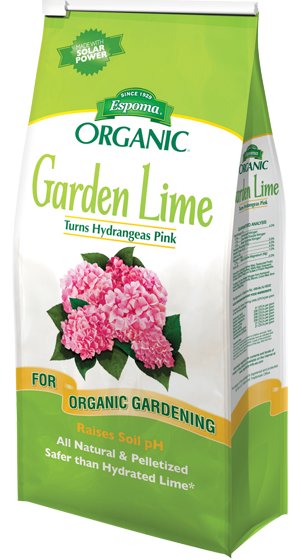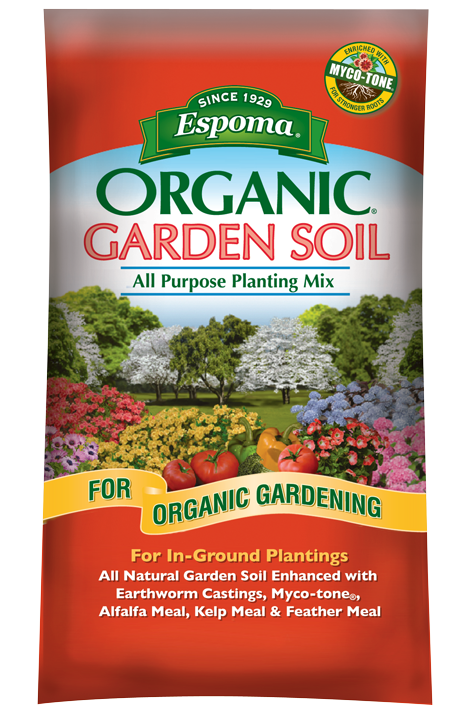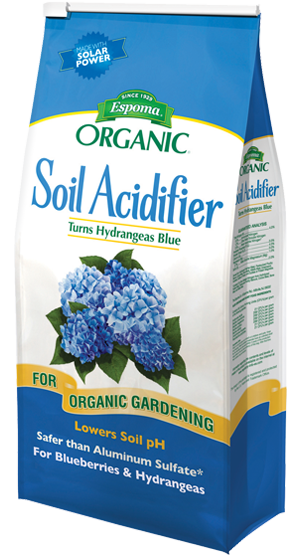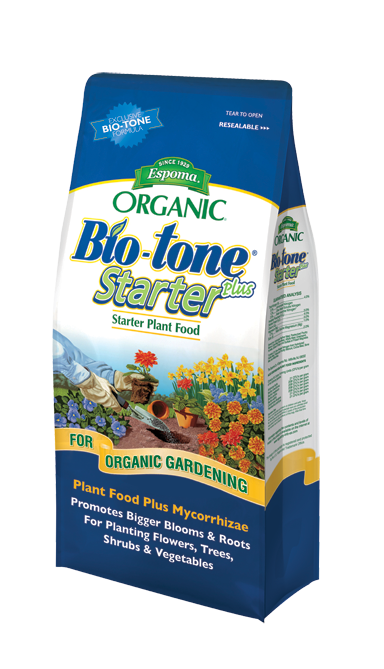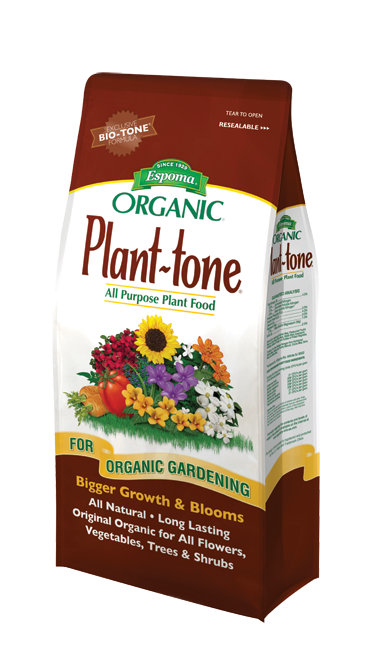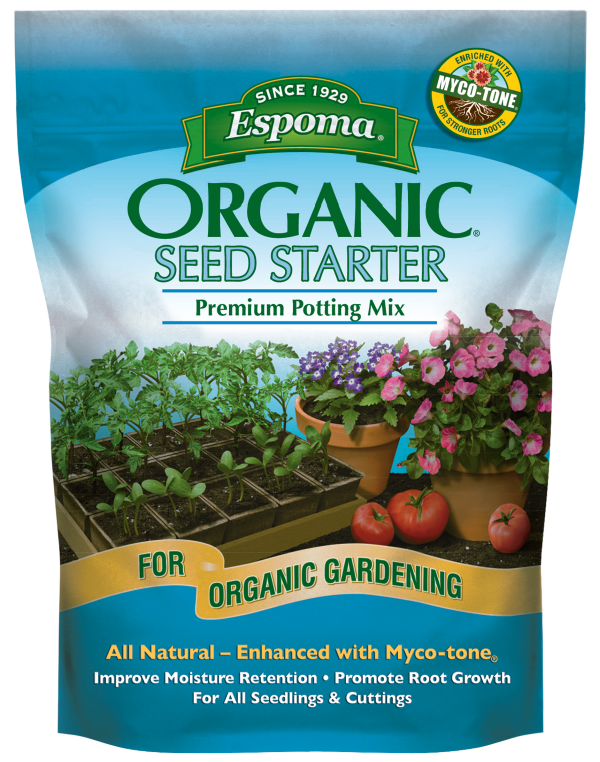Tag Archive for: Plant-tone
Seed to Succeed! Seed Starting Secrets
/in Spring GardeningStep aside houseplants. Not now indoor herbs. There’s a new indoor winter gardening project in town… indoor seed starting!
Find the Prime Time: When to Start Seeds Indoors
One of the biggest mistakes when starting seeds indoors is starting too soon.
Before starting seeds inside, look up the last spring frost date in your area, then count back 4-6 weeks. That’s the best time to start seeds indoors.
This handy seed starting chart from Organic Life makes it easy to calculate when to start and transplant your seeds.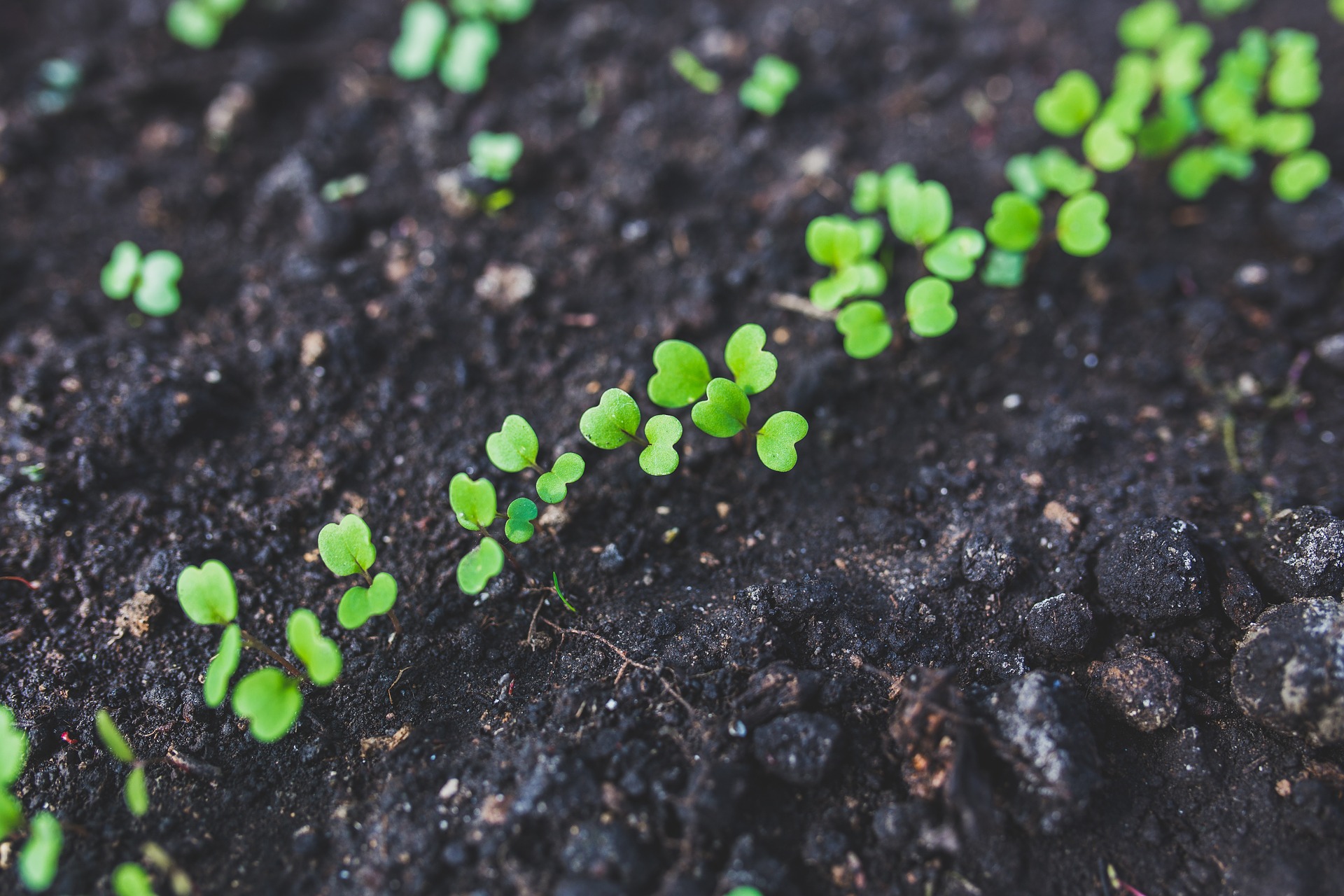
To Sow or No? Best Veggie Seeds to Start Indoors in Winter
Not all seeds succeed indoors! Save root crops and cold-hardy seeds for when it’s warm enough to plant directly outside. Or, you can grow two crops of broccoli and lettuce. Start seeds indoors now then sow more outside later.
Here are the best vegetable and herb seeds to start indoors in winter.
- Tomatoes
- Peppers
- Cucumbers
- Celery
- Collard greens
- Lettuce
- Kale
- Broccoli
- Beans
- Squash
- Eggplant
- Cabbage
- Basil
- Thyme
- Cilantro
- Oregano
- Sage
- Parsley
Seed to Succeed!
There are three secrets to starting seeds indoors: warmth, light and an organic seed starting mix that promotes root growth.
Start with Espoma’s Organic Seed Starter – a gardener’s favorite! But don’t take it from us. One of our customers, Shelia, shared that she used a lot of seed starter in her day, but “this one is just OUTSTANDING!” Her plants came up just perfect, and she “will never use anything else, ever again.”
Fill seed trays to within ¼” of the top and lightly water. Follow the instructions on the seed packets to see how deep and far apart to plant. Cover with soil, press down and label.
Place tray in a larger pan of shallow water for a minute so thewater seeps up from the bottom.
Place seeds in a warm spot between 65-75°. Try the top of the fridge!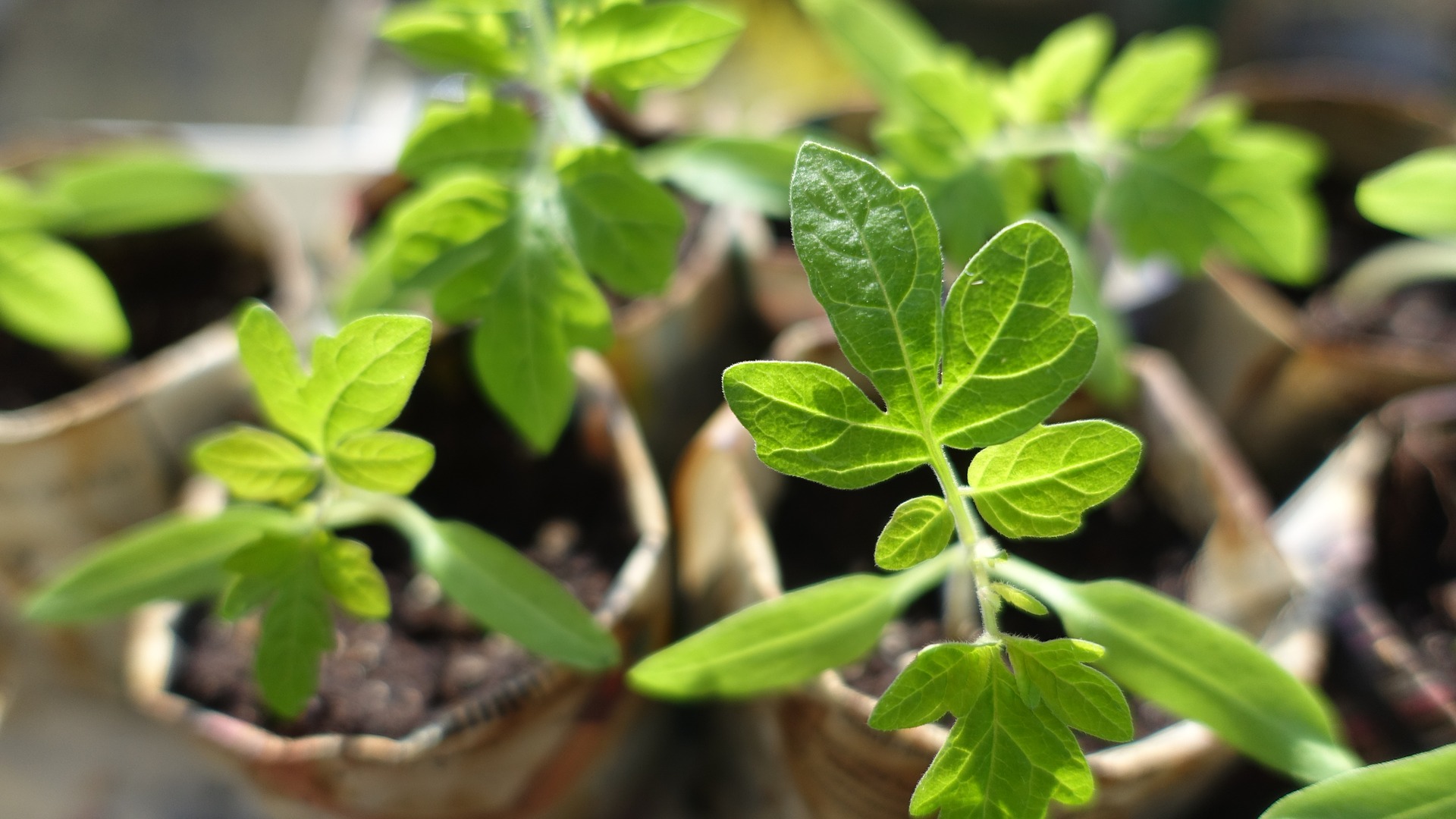
Loosely cover tray with plastic wrap or the cover from your seed-starting kit. Check seeds daily for moisture. Find even more detailed instructions here.
Give seeds 12-16 hours of light daily. Supplement sunlight with grow lights if needed.
Once you see sprouts, remove the cover and move seeds to a sunny, south-facing window that is 65-75°F. Then, turn the container a little each day to prevent leaning seeds.
When leaves grow, add a bit of fertilizer such as Espoma’s Plant-tone or liquid Grow!. Both are organic fertilizers, so they are safe to use on edibles, around children and pets and they help plants grow bigger than ever before.
Once you see that first sprout peeking through the potting soil, homegrown veggies are only weeks away!
One, Two, Three – What Soil Tests Numbers Really Mean
/in Fall GardeningWith just a tiny bit of water, a handful of seeds and some sunshine, your garden makes its own magic.
Well, almost! Your plants get all their food from the soil, too. After a busy summer, it’s time for your soil’s checkup, so your soil can keep growing its best.
Perform a soil test to see what your soil needs. And, we’ll help you understand what those numbers mean!
Scoop, Snoop and Score Soil.
Your soil’s health is a mystery waiting to be solved. All you need to do is grab a handful of soil and examine it. Send it off to your local extension service. Or, get down and dirty, and DIY it. Here’s how to perform a soil test.
Soil tests measure the nutrients available to plants along with their pH level. Garden soil should be between 6.0-7.0 pH, while the ideal pH for grass is 6.5-7.0.
- Low pH? Power the Sour. You’ve got sour, also called acidic, soil with a pH level under 7. Before remedying, remember some plants like this! Raise soil pH levels by adding Espoma’s Organic Garden Lime.
- High pH? Treat the Sweet. Soil with a pH level over 7 is known as sweet, or alkaline, soil. To fix, add Espoma Organic Soil Acidifier.
Conclusion Confusion. Understanding Soil Test Numbers
Looking at your soil test, your head may start spinning. What do all those numbers mean? Stick with us, your teacher at Espoma’s Garden School, to learn!
- When to N. The “N” on your soil test stands for nitrogen, which helps leaf growth. To raise nitrogen levels, add an organic fertilizer with a higher nitrogen level. Or, use blood meal or fish meal. To lower nitrogen levels, choose a fertilizer with less nitrogen.
- Be the P. “P” represents phosphorus, which helps plants flower and grow fruit. Need more phosphorous? Use an organic fertilizer with a higher percentage of P. Or, add bone meal. To lower phosphorous numbers, cut back on the P on the fertilizer bag.
- Way of the K. “K” stands for potassium, which helps plants resist diseases and grow healthy roots. If you have too much K, use an organic fertilizer with less potassium. Likewise, if you need more, opt for an organic fertilizer with a higher number K. Or, add sulfate of potash or greensand.
Strong, healthy soil gives way to stronger, bigger and better plants. Talk about a productive day in the garden!
Don’t Stall! Start Veggie Seeds for Fall
/in Fruits & Vegetables, Vegetable GardeningToday’s garden is bursting full of fresh fruits and veggies! There is nothing better than picking and eating a tomato, bean or pepper fresh off the plant.
Yet – we aren’t always so lucky. With fall around the corner, we are already thinking about how to prolong that never-ending supply of delicious, homegrown produce.
Now is the time to start cool-season seeds indoors.
Reap What You Sow: Starting Cool-Season Seeds Indoors for Fall

- Get the Goodies. For fall crops, pick the hardiest and most frost tolerant seeds, so they can survive the first frost. Some of our favorites include broccoli, cabbage, kale, cauliflower, beets, carrots and spinach.
- Time to Prime. Find your first fall frost date. Look at the number of days to harvest on each seed packet. Use that number to count back from the first frost date, so the seeds have time to mature. Play it safe and add two weeks since plants can grow slower during short fall days.
- Awaken the Seeds. Fill seed starting trays within ¼” of the top with a high-quality organic seed starter, like Espoma’s Organic Seed Starter. Read each seed packet to learn how deep and far apart to plant seeds. Cover with soil, press down, label and lightly water.
- Store and Cover. Lightly cover the tray with plastic wrap. Keep in a sunny spot near a south-facing window.
- Smart Watering. Keep seeds moist by placing the tray in a pan of shallow water until the water seeps up from the bottom. Refill when empty.
- Break Out Sprouts. When leaves start to poke from the soil, remove plastic wrap. Feed with an organic fertilizer, like Espoma’s Plant-tone.
- A Home Away from Home. Two weeks before planting outside, begin hardening off seeds. Move outside for a few hours a day, increasing time outdoors daily. Also, reduce watering without letting the soil dry out.
- All Grown Up! Gently remove plants from see starting tray, and plant in a prepared bed. Mix-in organic starter plant food to help them adjust and grow strong, such as Espoma’s Bio-tone Starter Plus.
Crunch! You’ll be munching on homegrown produce well into fall. How amazing (and tasty!) is that?
Hip, Hop, Hurray! Grow Hops for Homemade Beer
/in Fruits & Vegetables, Spring Gardening, Vegetable GardeningHomebrewed beer made of homegrown hops takes the craft beer movement to the next level. As you take that first sip, you don’t just taste the beer. You taste the pride, satisfaction and joy of brewing it yourself from scratch. Become a true brewmaster by growing your own hops.
Plus, growing your own hops is cheaper and makes your beer taste incredible.
Get Hoppy! Grow Your Own Hops for Homebrews
- Which Hop to Crop? Buy hop rhizomes online that match the flavor and type of beer you like. They come in every flavor under the sun. Brewers typically use multiple hop varieties in their beers, so plant several varieties that you can mix and match.
- Spot a Spot. Hops need LOTS of sun to thrive — about 6-8 hours daily. Plus, the spot where you plant needs to have vertical space. Hops grow up, not out.
How to Plant Hops for Home Brewing
- Dig a Cozy Home. Dig 4” deep holes and mix in an organic fertilizer like Bio-tone Starter Plus by Espoma. If planting the same hop variety, dig each hole 3’ apart. If planting different hop varieties, plant them 5’ apart.
- Get ‘Em Situated. Place the rhizome horizontally in the hole with the root side down, pointy side up. If the rhizome is budding, plant the bud facing up. Fill hole, cover with soil and add mulch to conserve water.
- Bursts of Water. When soil is dry, provide a frequent, but short burst of water!
- Hungry, Hungry Hops. To grow strong hops, feed them an organic plant food each month. Find out how to apply Espoma’s Plant-tone.
- To New Heights. Once your hops are 1’ tall, select the strongest 2-3 vines and wrap them counter-clockwise around an 8-12’ trellis. Prune the remaining vines from the base of the hop. Over the next few days, keep wrapping the vines around the trellis to train them. Hops grow quickly so continue to check your vines regularly and keep wrapping!
Now those tiny hops don’t look like beer. Before long though, you’ll be sipping on their flavors in the most refreshing homebrew yet!
Feed Boxwood with Organic Plant Food in Early Spring
/in Trees & ShrubsEvergreens — the name says it all. These plants and shrubs add color to your garden all year long, even in the dead of winter!
Though, we admit there’s one evergreen we love most: boxwoods.
Boxwood shrubs do it all. They’re super easy to care for, stay green all winter and are deer resistant.
These shrubs add instant definition, structure and privacy to outdoor spaces. Plus, boxwood shrubs morph into any shape when pruned. If an artful topiary isn’t for you though, they look just as beautiful when pruned slightly or left to grow free-form.
As easy as these shrubs are, there’s one BIG mistake people make when growing boxwood.
All too often, people believe that Holly-tone fertilizer is the feeding solution for boxwoods, just like they do with other evergreens. But that’s not the case.
While boxwood is part of the evergreen family, there’s one thing that makes them different. Most evergreens need to be fed Holly-tone, an organic fertilizer for acid-loving plants. But, boxwood — and arborvitaes — are evergreen shrubs that are not acid-loving plants. So, they need an all-purpose plant food.
Avoid the #1 mistake people make when growing boxwood. Fertilize your boxwood with an organic all-purpose plant food to keep them a healthy green. Plus, feeding these shrubs in early spring helps them fight off disease all season.
How to Feed Established Boxwood:
To see how much fertilizer your boxwood needs, measure the width of your boxwood with a tape measure.
For each foot, use 1 cup of Espoma Plant-tone. For example if your boxwood is 4’ wide, use 4 cups of organic plant food.
Then, sprinkle around the boxwood’s drip line, which is a circle formed around the shrub’s widest branch.
How to Feed New Boxwood:
If you want to add a border or line a path, boxwood is just what you’re looking for. Go ahead and get planting.
Boxwood grows best in zones 6-8. As always before planting, make sure the area you’d like to plant matches the plant’s likings. Read that plant tag! Most boxwood need full to partial sun and well-drained soil.
Once you’ve found the perfect spot and the perfect boxwood, it’s time to plant.
Dig a hole as deep and twice as wide as the root ball. Scoop a handful of soil to test, too. Boxwood needs a soil pH between 6 and 7. If your pH is too low, add Espoma Organic Garden Lime. If your soil pH is higher than 7, amend with Espoma Organic Soil Acidifier.
Now, loosen roots and position boxwood in the hole.
Replace 1/3 of the soil with compost or Espoma Organic All Purpose Garden Soil. And, mix in 1-2 cups of Organic Plant-tone. Adding an organic plant food now helps plants thrive in their new home.
Then, fill the rest of the hole with amended soil or Espoma Garden Soil.
Lightly water now, and continue watering once a week during spring and summer.
Finally, make the boxwood look right at home by adding 2-3” of mulch to control weeds and conserve water.
Boxwood transforms any area into a defined, stately space. Soon, these beautiful evergreens will even be dotted with sweet, white blooms.
What’s your favorite evergreen? Comment below to share!
Spruce up to Jumpstart the Gardening Season
/in Vegetable GardeningEven though we still need cozy scarves and burly winter coats, we won’t for much longer. Our favorite time of year is almost here! We cannot wait to be outside, gardening, playing and basking in the sun in about two weeks.
Enough dreaming about the warmer days though, it’s time to start the yard and garden prep.
Although we’ve got green lawns on the mind all year long, even when they’re covered by 18” of snow, we’re eager to get outside and start prepping for our best lawn yet. Same for you?
Here are our professional tips for tackling early spring yard prep:
First, remove dead or diseased branches from trees and shrubs by cutting at a 45º angle with pruners.
Armed with your pruners, cut flowering perennials to 4-5” and trim ornamental grasses to 2-3”. Just like haircuts make hair grow faster and healthier, pruning plants does the same!
While walking around the yard, pick up fallen branches, spent annuals, lingering leaves and other natural debris. Doesn’t your yard already look better?
Then if the snow has melted, grab a rake and break up any matted, crunchy or discolored spots in the lawn to renew the area.
Finally, if the ground is thawed, scoop up a small handful of soil to test. Testing soil either with an at-home kit or with help from your extension agency is one of the most beneficial actions you can take.
Soil tests tell you what to add to get the perfect soil. Imagine racking your brain to figure out why your veggies are too small or your flowers look unhealthy. In reality, the problem could be your soil.
Take time to test and amend your soil needs — from soil acidifier or organic fertilizer. Cultivating organic, healthy soil now means your garden will deliver its absolute best later on. Come back to our blog later this month for more specific tips on adjusting your soil for that perfect lawn or plant.
Ah, the garden is gearing up for its comeback. Now, start planning what additions you’ll make to the garden this season.
Start Seeds Indoors in 10 Easy Steps:
/in Vegetable GardeningPlanting seeds inside is the first step toward Spring! Starting now means you’ll be planting seedlings outside in just 4 to 6 short weeks.
Plus, planting seeds is as easy and fun as can be. Gather your kids, family or friends to plant seeds with you for a “think Spring” get-together.
There’s nothing more refreshing or rewarding than crunching down on produce you’ve grown from seed.
How to Plant Seeds Inside:
1. Dream big
Choose your favorite high-quality seeds from a huge selection. Starting hard-to-find or expensive plants from seed will give you the biggest bang for your buck.
2. Stock up
Get plastic trays with holes in the bottom or a seed-starting kit as well as an organic soil starter, such as Espoma’s Organic Seed Starter. An organic soil like this is made specifically to help your seedlings grow strong, sturdy roots in a healthy, safe environment.
3. Get plantin’
Fill seed trays to within ¼” of the top and lightly water. Then, follow seed packet instructions to see how deep and far apart to plant. Cover with soil, press down and label.
4. Water wisely
Water perfectly by placing tray in a larger pan of shallow water for a few seconds or up to a couple of minutes so the water seeps up from the bottom.
5. Find the right spot
Place seeds in a warm, safe place. To warm up a spot, place a space heater nearby or place trays on top of the refrigerator.
6. Take cover and wait
Loosely cover the tray with plastic wrap, or use the cover in your seed-starting kit. Check seeds daily for moisture.
7. Spot a sprout
Once you see sprouts, remove the cover and move seeds to a sunny, south-facing window that is 65-75°F. Then, turn the container a little each day to prevent leaning seeds.
8. Boost plants
When leaves grow, add a bit of fertilizer such as Espoma’s Plant-tone. Plant-tone is an organic fertilizer, so it’s safe to use on edibles and helps plants grow bigger than ever before.
9. Strengthen seeds
Check seed packets to see when to plant after the last frost. Before planting you’ll want to harden off seedlings. Hardening off is a process that gets seeds used to the outdoors. Simply place your tray outside for a few hours a day for 7-10 days. Each day, increase their time outdoors and reduce watering.
10. Plant permanently
Once the last frost date has passed, you’re ready to plant! Gently remove plants from containers without damaging the roots. Plant in a prepared bed and mix in organic starter plant food to keep them strong, such as Bio-tone Starter Plus.
You did it! Spring is just a step away – and so are your crisp, garden-fresh veggies and fruits!
Tell us, what seeds are you starting this year?
Featured Products:





